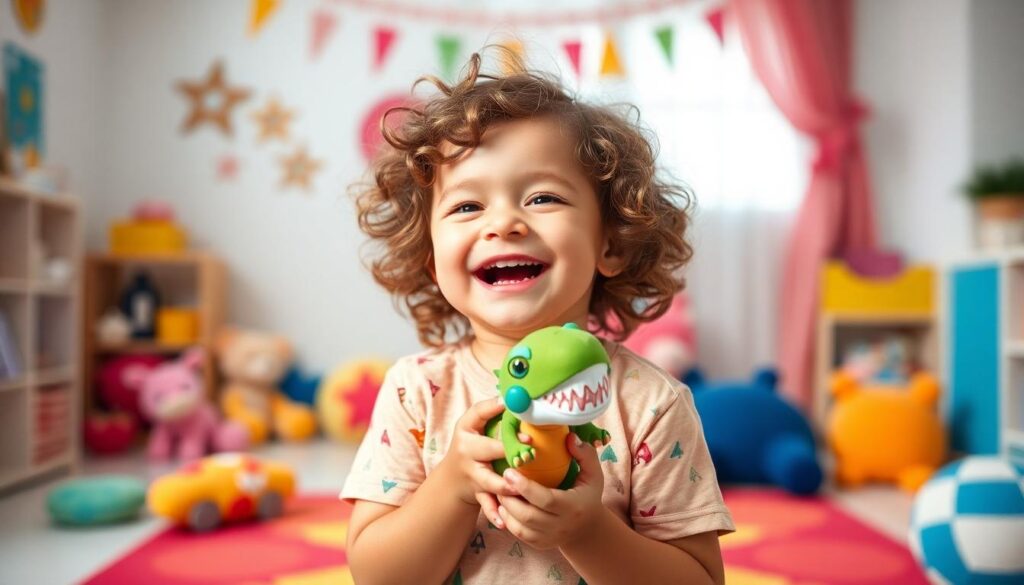Looking for ways to light up your 5-year-old’s day with giggles and laughter? We’ve compiled the perfect collection of age-appropriate jokes that will have your little one rolling on the floor laughing. These clean, silly jokes are specifically designed for kindergarten-aged children who are just discovering the joy of humor.
10 Silly Animal Jokes That Will Make Your 5-Year-Old Giggle
- Why don’t elephants use computers?
They’re afraid of the mouse! Five-year-olds love this joke because it plays on the size difference between these two animals in a silly way.
- What do you call a pig that does karate?
A pork chop! Kids find this hilarious because it combines the image of a pig doing martial arts with a familiar food name.
- Why are frogs so happy?
They eat whatever bugs them! This joke works perfectly for kindergarteners who are just learning about cause and effect in humor.
- How do you make an octopus laugh?
With ten-tickles! The play on “tentacles” is simple enough for young children to understand once explained.
- What do you call a sleeping bull?
A bulldozer! Children at this age love jokes that transform familiar words into something unexpected.
- Why did the chicken cross the playground?
To get to the other slide! This twist on the classic chicken joke appeals to young kids who spend time on playground equipment.
- What has four legs but can’t walk?
A table! Young children delight in this type of riddle joke that makes them think differently about everyday objects.
- How does a frog start its car?
With a croak-start! The sound play in this joke makes it especially enjoyable for five-year-olds who love animal sounds.
- What do cats eat for breakfast?
Mice Krispies! This joke combines a familiar cereal with a cat’s favorite prey, making it perfectly silly for kindergarteners.
- Why can’t you give Elsa from Frozen a balloon?
Because she’ll “let it go!” While technically not an animal joke, this Disney-inspired punchline is irresistible to five-year-olds who know the famous song.
8 Knock-Knock Jokes Perfect for Kindergarteners

Knock-knock jokes are perfect for 5-year-olds as they follow a predictable format that helps children understand the concept of humor. These simple jokes are great for kindergarteners who are just developing their sense of wordplay.
Classic Knock-Knock Jokes for Beginners
Knock, knock!
Who’s there?
Cows go.
Cows go who?
No, cows go “moo”!
Knock, knock!
Who’s there?
Boo.
Boo who?
Don’t cry, it’s just a joke!
Knock, knock!
Who’s there?
Lettuce.
Lettuce who?
Lettuce in, it’s cold outside!
Knock, knock!
Who’s there?
Banana.
Banana who?
Knock, knock!
Who’s there?
Banana.
Banana who?
Knock, knock!
Who’s there?
Orange.
Orange who?
Orange you glad I didn’t say banana again?
Animal-Themed Knock-Knock Jokes Kids Love
Knock, knock!
Who’s there?
Owl.
Owl who?
Yes, they do go “who, who”!
Knock, knock!
Who’s there?
Frog.
Frog who?
Frog-et about it!
Knock, knock!
Who’s there?
Bee.
Bee who?
Bee careful not to laugh too hard!
Knock, knock!
Who’s there?
Baa.
Baa who?
7 “What Do You Call” Jokes That Preschoolers Can Understand
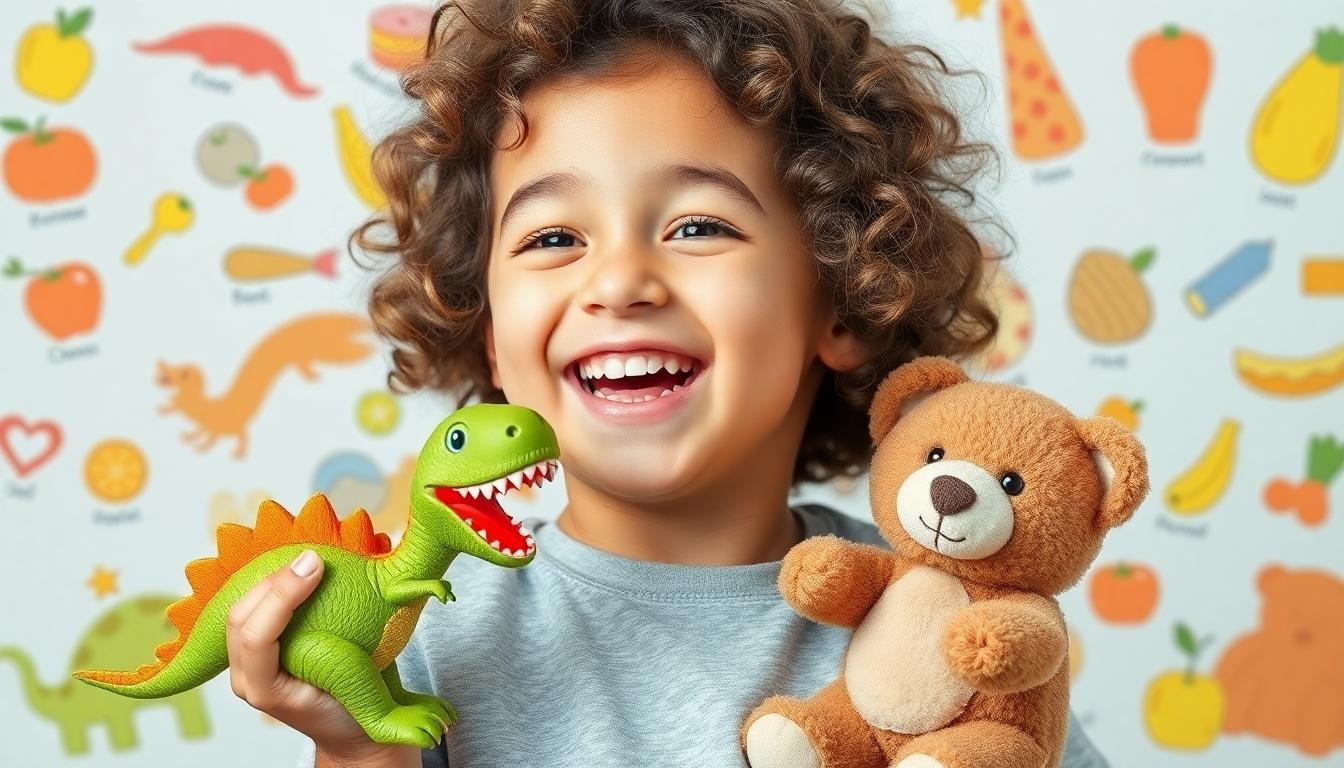
“What do you call” jokes are perfect for 5-year-olds because they follow a simple question-and-answer format that preschoolers can easily remember and retell to friends.
- What do you call a donkey with three legs? A wonky donkey! Kids love this joke because it rhymes and introduces the concept of something being “wonky” or unbalanced.
- What do you call a bear with no ears? B! This clever joke works on a visual level when written down, helping children understand how removing “ears” from “bear” leaves just the letter B.
- What do you call a fish without an eye? A fsh! Similar to the bear joke, this play on the spelling of “fish” without an “i” (eye) makes children giggle while reinforcing letter recognition.
- What do you call a camel with no humps? Humphrey! The name “Humphrey” sounds like “hump-free,” making this a delightful play on words that preschoolers can appreciate.
- What do you call a gorilla with no ears? Anything you like, he can’t hear you! This joke introduces children to the concept of logical humor with an unexpected punchline.
- What do you call a dinosaur with one eye? Dyafinkeesaurus! When read aloud, this funny name sounds like “Do ya think he saw us?” – a perfect joke for dinosaur-loving 5-year-olds.
- What do you call a duck that gets all A’s? A wise quacker! This joke combines animal sounds with the concept of being smart at school, making it relatable for kindergarteners.
Food-Related Jokes for Young Jokesters
Food jokes are always a hit with 5-year-olds who are familiar with different foods and enjoy silly mealtime humor.
- What do you use to hide a horse? Maskapony! This joke works because “mask a pony” sounds like “maskapony,” introducing children to the concept of homonyms.
- What do you use to encourage Pooh Bear? Camembert! The cheese name “Camembert” sounds like “Come on bear,” creating a punny joke that ties in a beloved character.
- What did the cheese say to the microphone? Halloumi! The cheese name “Halloumi” sounds like “Hello, me!” when said with enthusiasm, making this joke work especially well when performed.
- Why are teddy bears never hungry? Because they are always stuffed! This joke plays on the double meaning of “stuffed” – both filled with food and filled with stuffing material.
Simple Wordplay Jokes for 5-Year-Olds
Wordplay jokes help develop language skills while delivering big laughs for preschoolers.
- Why did Tigger stick his head in the toilet? He was looking for Pooh! This joke uses the character names from Winnie the Pooh to create a bathroom humor joke that’s still appropriate for young children.
- What happened to the ice cream van? It melted! This straightforward joke connects a familiar treat with its natural property in a surprising way.
- Why did the beach blush? Because the sea weed! The pun on “seaweed” and “sea weed” (meaning the ocean urinated) is innocent enough for kids to enjoy without fully understanding the implied bathroom humor.
- Why are pirates called pirates? Because they Aaarrrr! This joke introduces children to the classic pirate sound while playing with pronunciation in a way that’s easy for 5-year-olds to mimic and remember.
6 “Why Did” Jokes That Are Easy for Kids to Remember
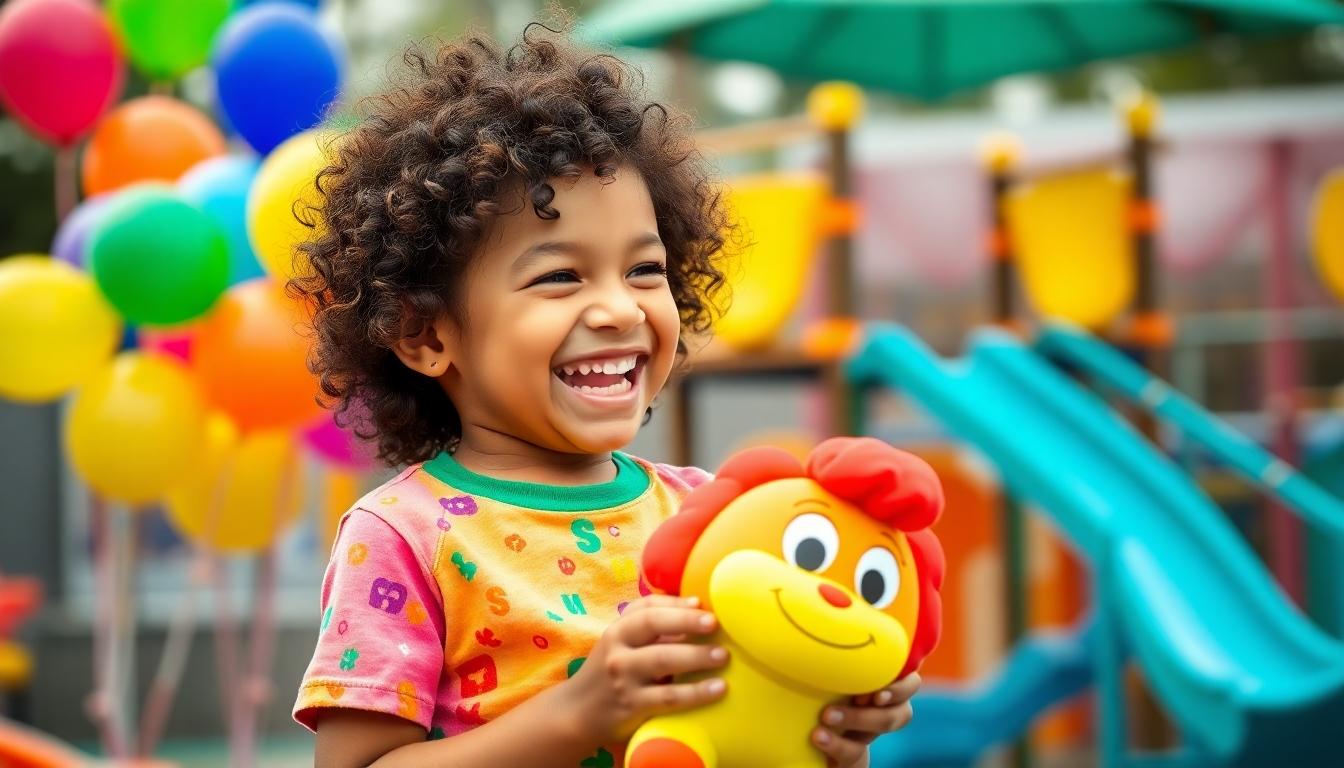
“Why did” jokes are perfect for 5-year-olds because they follow a simple question-and-answer format that kids can quickly learn and share with friends. We’ve gathered six hilarious “why did” jokes that are guaranteed to get your kindergartener giggling:
- Why did Tigger stick his head in the toilet?
Because he was looking for Pooh! This joke combines a beloved character with bathroom humor that 5-year-olds find endlessly amusing.
- Why did the tissue dance?
It felt the boogie in it! Kids love this play on words between “boogie” as dancing and the slimy kind they’re all too familiar with.
- Why did the ice cream van melt?
It melted! The simplicity of this joke makes it especially appealing to young children who appreciate straightforward humor.
- Why did the ghost family remodel their house?
Nobody was using the living room! This clever wordplay introduces kids to puns in a fun, spooky context they can understand.
- Why didn’t princess Elsa get a balloon?
She’d only let it go! Children who love Frozen will particularly enjoy this reference to the movie’s famous song.
- Why didn’t the dime roll down the hill with the nickel?
Because it had more cents! This joke introduces kids to money concepts while delivering a punny punchline about “cents” versus “sense.”
9 Riddles and Puns That 5-Year-Olds Can Solve

Riddles and puns offer the perfect brain exercise for curious 5-year-olds who are developing their problem-solving skills and sense of humor.
Picture-Based Riddles for Visual Learners
Visual riddles work wonderfully for kindergarteners who learn best through images. Try showing your child a drawing of a sun wearing sunglasses and ask them what the sun is wearing when it’s hot. This type of visual puzzle encourages children to make connections between what they see and what they know. Kids can also enjoy riddles that involve drawing simple objects with unexpected additions, making the learning experience both visual and entertaining. Visual cues help young minds process information more effectively while giving them the satisfaction of solving a puzzle on their own.
Simple Word Play Riddles for Language Development
Word play riddles boost vocabulary and language comprehension in an enjoyable way. Ask your 5-year-old, “What do lions eat?” The answer—”They eat anything they can get their paws on!”—introduces them to puns through familiar animal characteristics. Another kid-friendly riddle asks, “What cheese do you use to hide a horse?” with the delightful answer “Maskapony!” Children love these clever word associations that sound like familiar terms. Riddles like “What do you call a camel with no humps?” (Answer: Humphrey) or “What do you call a bear with no ears?” (Answer: B) teach children about homophones and word sounds. Pirates also make excellent riddle subjects—”Why are pirates called pirates? Because they Aaarrrr!” These simple but clever word play riddles help develop critical language skills while providing plenty of giggles.
5 Jokes About Everyday Objects Kids Can Relate To

Children love jokes that reference familiar items from their daily lives. These five jokes about everyday objects are perfect for 5-year-olds because they use simple concepts with unexpected twists.
- The Invisible Door Guy
“What do you call a guy lying on your doorstep? Matt!”
Kids will giggle at this play on words connecting a person’s name with something they walk on every day. The doormat joke introduces them to homonyms in a fun way.
- The Sticky Stick
“What’s brown and sticky? A stick!”
This joke works brilliantly with kindergarteners because it uses the dual meaning of “sticky” in a way that’s surprising yet completely obvious once revealed. Children encounter sticks regularly during outdoor play, making this joke instantly relatable.
- The No-Eyed Fish
“What do you call a fish with no eyes? A fsh!”
Young children will love this clever wordplay that removes the “i” (eyes) from fish. It’s a simple joke that helps them recognize how words are constructed while referencing a creature they’re familiar with.
- The Bathroom Bear
“What animal do you look like when you get into the bath? A little bear!”
Bath time becomes more fun with this joke that plays on the phrase “a little bare.” Kids relate to the daily routine of bathing while enjoying the silly image of becoming a bear.
- The Broken Pumpkin Fix
“How do you fix a cracked pumpkin? With a pumpkin patch!”
This seasonal joke uses familiar fall objects and introduces children to multiple meanings of the word “patch.” It’s especially effective around Halloween when pumpkins are everywhere.
These jokes focus on objects and concepts that are part of a child’s everyday environment, making them easy to understand and remember. The simple wordplay helps develop language skills while providing plenty of laughs.
8 Weather and Nature Jokes for Curious Young Minds
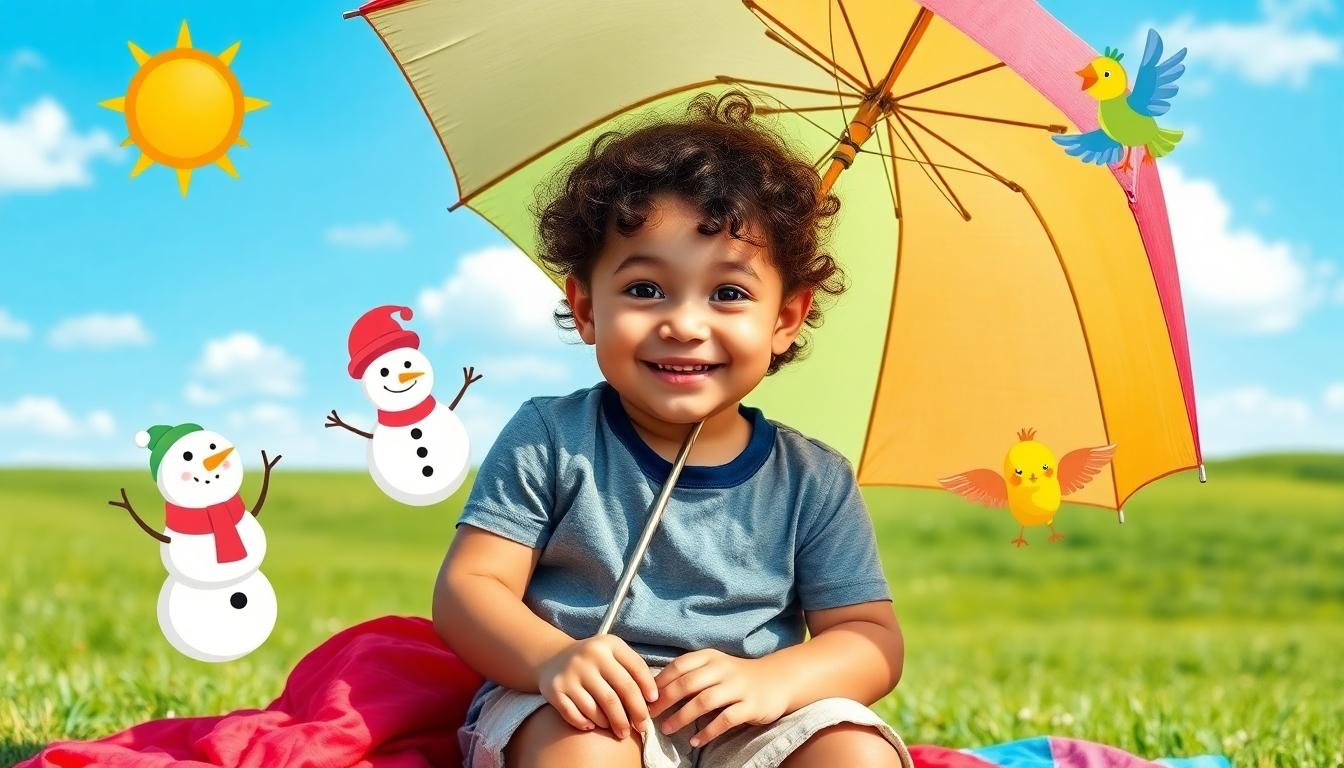
- What goes up when the rain comes down?
Umbrellas go up when rain comes down! This weather joke helps little ones make connections between cause and effect in a humorous way. Kids love this visual joke because they’ve experienced holding umbrellas during rainstorms.
- What do you call a snowman that works out?
The abdominal snowman! This play on words transforms “abominable snowman” into a fitness-loving snowperson. Young children find this joke hilarious as they picture a snowman with muscles doing exercises.
- Why does the hurricane have bad vision?
Because it only has one eye! This clever joke introduces kids to the concept of a hurricane’s “eye” while making a funny connection to vision. Many 5-year-olds giggle at this simple wordplay.
- What happens when it rains cats and dogs?
You get a wet pet! This joke plays with the common expression “raining cats and dogs” and gives it a silly, unexpected twist. Children love imagining animals falling from the sky and the funny image of soggy pets.
- Why didn’t the sun go to college?
Because it already has a million degrees! This temperature-based joke teaches kids about the concept of heat while making them laugh. The pun on “degrees” works perfectly for curious young minds.
- What do you call a snowman on a hot day?
A puddle! Kids instantly understand this joke because they’ve witnessed snow melting. The visual of a snowman turning into a puddle creates an instant giggle moment for preschoolers.
- How do chickens play in the rain?
They love fowl weather! This pun on “foul weather” uses the word “fowl” (a type of bird) to create a clever joke. Young children learning about different animals will appreciate this playful wordplay.
- Why do birds fly south every winter?
Because it’s too far to walk! This migration joke introduces a natural phenomenon while providing a perfectly logical but funny explanation. Kids find the image of birds trying to walk long distances absolutely hilarious.
7 Jokes About Colors and Shapes for Early Learners
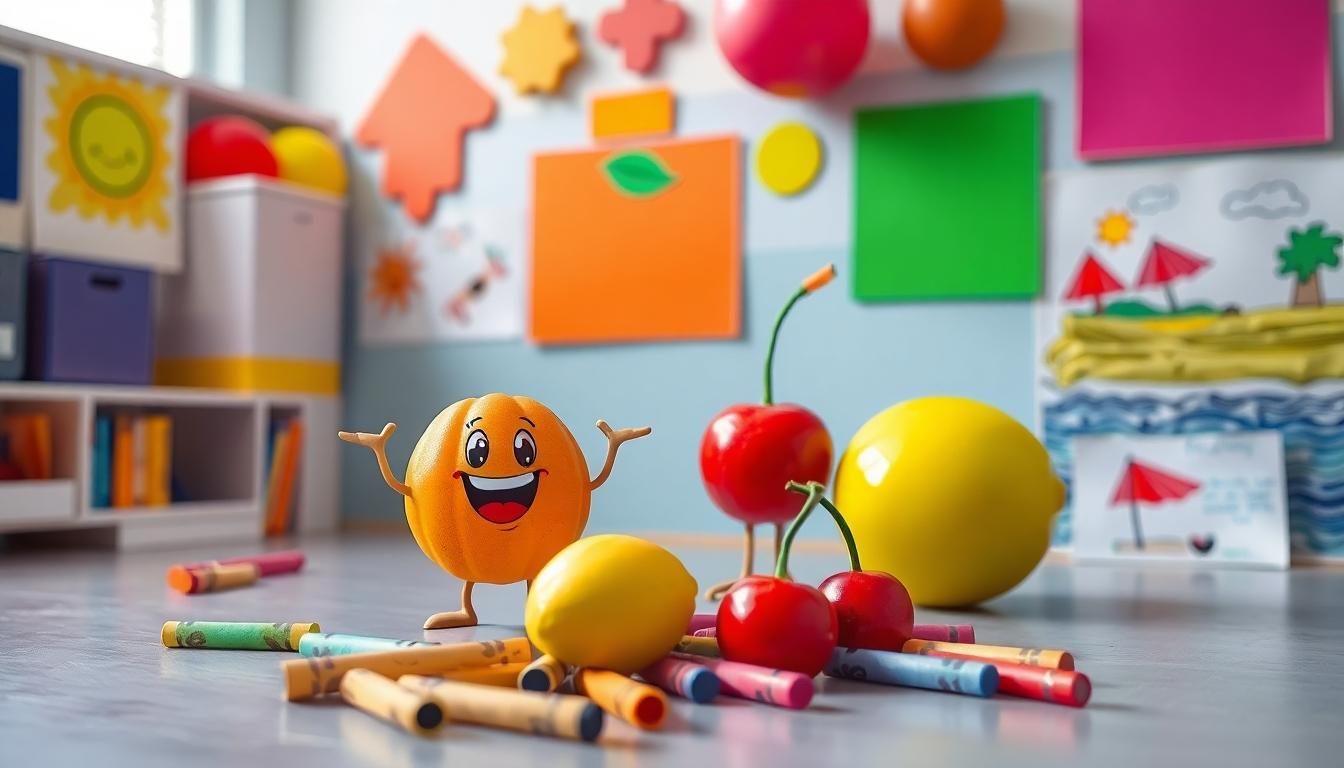
1. The Pumpkin Repair Joke
How do you fix a cracked pumpkin? With a pumpkin patch! This orange-themed joke introduces children to the concept of double meanings while using a familiar round shape they’ll recognize from Halloween activities. Kids love this joke because it connects something they understand (pumpkins) with the concept of fixing things.
2. The Blushing Beach
Why did the beach blush? Because the sea weed! This colorful joke plays with the word “weed” versus “wee’d” (went to the bathroom), creating a silly mental image that 5-year-olds find hilarious. The beach’s sandy color provides a visual element that helps children connect colors with humor.
3. The Lemon Haircut
What’s yellow and looks like a pineapple? A lemon with a new haircut! Children adore this joke because it combines two familiar yellow fruits in an unexpected way. The vivid yellow color makes this joke particularly memorable for young minds just learning to categorize objects by color.
4. The Royal Circle
What’s round and wears a crown? A circle at the king’s party! This shape-based joke introduces geometric concepts while adding a touch of imagination. Five-year-olds are learning basic shapes in kindergarten, making this joke both educational and entertaining.
5. The Triangle’s Journey
Why did the triangle cross the playground? To get to the other slide! This playful twist on the classic chicken joke incorporates a basic shape that children learn early. The mental image of a triangle sliding down a playground slide creates giggles while reinforcing shape recognition.
6. The Sledding Cherry
What’s red and slides down slopes? A cherry on a sled! This color-based joke creates a funny visual that connects the familiar red fruit with a winter activity. Young children who are mastering their color identification find this joke particularly captivating.
7. The Quiet Crayon
What color is a quiet crayon? Shhh-in! This clever pun plays on the sound “cyan” (a blue-green color) and the shushing sound. While the wordplay might be slightly advanced, the connection to crayons makes it accessible to kindergarteners who use these colorful tools every day.
The Benefits of Sharing Jokes With Your 5-Year-Old
We hope these kid-friendly jokes have brightened your day and given you plenty of material to share with the little ones in your life! Humor is truly a gift that keeps on giving for 5-year-olds who are just discovering the joy of wordplay and silly concepts.
Beyond the giggles these jokes provide, they’re helping your child develop language skills, boost confidence and create precious bonding moments. There’s something magical about watching a child’s face light up when they understand a punchline or successfully tell a joke themselves.
So keep the laughter flowing! These simple jokes are perfect stepping stones to a lifetime of humor appreciation and joy. Now go make some memories – one giggle at a time!
Frequently Asked Questions
Why are jokes important for 5-year-olds?
Jokes help 5-year-olds develop language skills, understand social cues, and experience joy through laughter. Age-appropriate humor fosters creativity and helps children connect with others. Clean, silly jokes provide entertainment while teaching kids about wordplay and the structure of humor in a way that’s accessible and engaging for their developmental stage.
What types of jokes work best for kindergarteners?
Knock-knock jokes, simple wordplay, and animal jokes work best for kindergarteners. Their predictable format makes them easy to understand and remember. Jokes about familiar objects, animals, and situations are particularly effective because they relate to a child’s everyday experiences and knowledge base, making the humor more accessible.
How do knock-knock jokes help children develop?
Knock-knock jokes help children understand humor structure through their predictable format. They improve language skills, teach turn-taking in conversation, and build confidence when kids master and share these jokes with others. The repetitive pattern helps children anticipate punchlines, fostering cognitive development and social interaction skills.
Can jokes help with my child’s language development?
Yes, jokes significantly boost language development in children. They introduce new vocabulary, demonstrate wordplay, help children understand multiple meanings, and encourage active listening. When kids repeat jokes to others, they practice communication skills and gain confidence in their verbal abilities while having fun.
What are “What do you call” jokes and why do kids love them?
“What do you call” jokes follow a simple question-answer format that’s perfect for preschoolers. Kids love them because they’re easy to remember, often involve silly wordplay, and create unexpected connections between ideas. These jokes, like “What do you call a bear with no ears? B!” make children feel clever when they understand the punchline.
How can riddles benefit a 5-year-old’s development?
Riddles act as brain exercises for 5-year-olds, enhancing problem-solving skills, critical thinking, and vocabulary. They encourage children to make connections between concepts, boost language comprehension, and provide a sense of accomplishment when solved. Picture-based riddles particularly help visual learners develop cognitive skills while having fun.
Are weather and nature jokes educational for young children?
Yes, weather and nature jokes combine learning with humor to help children understand natural phenomena in an entertaining way. Jokes like “What goes up when rain comes down? Umbrellas!” introduce scientific concepts through wordplay. These jokes help children make connections between everyday observations and broader concepts while developing their sense of humor.
How do color and shape jokes support early learning?
Color and shape jokes reinforce foundational concepts through humor, making learning more memorable and enjoyable. Jokes like “Why did the beach blush? Because the sea weed!” help children recognize colors, shapes, and their attributes while developing language skills. This playful approach to learning creates positive associations with educational concepts.

